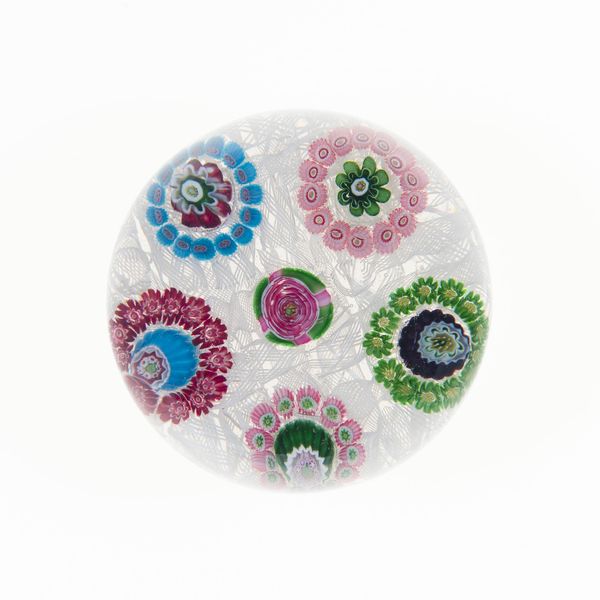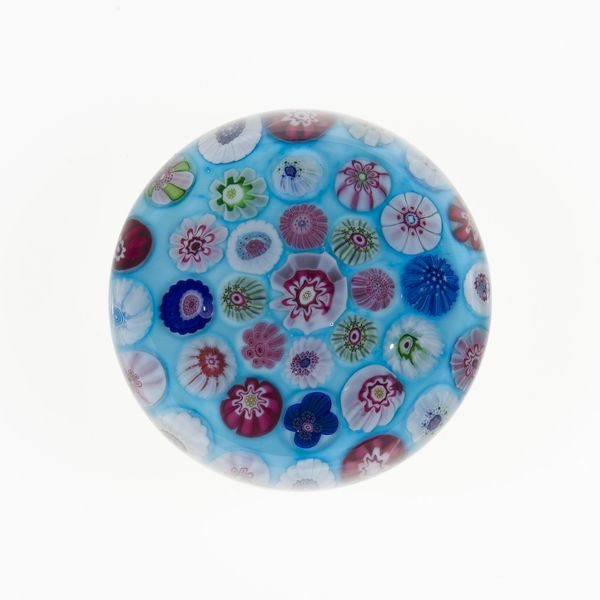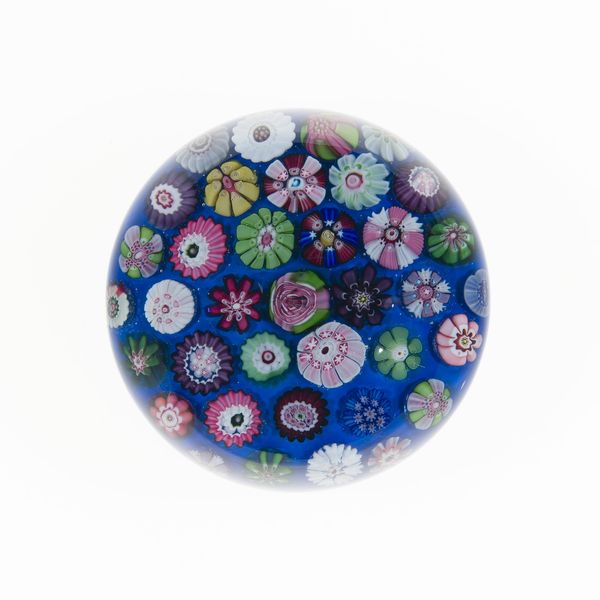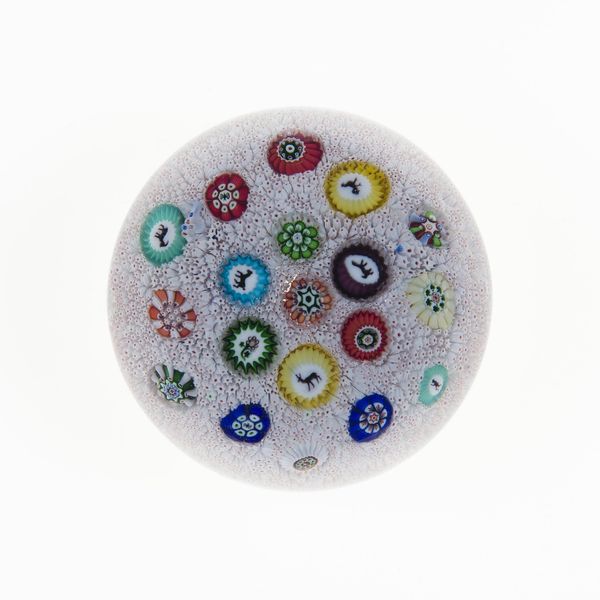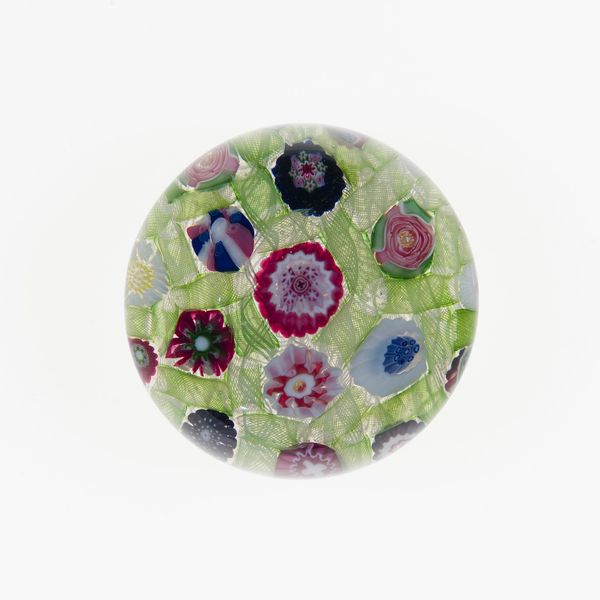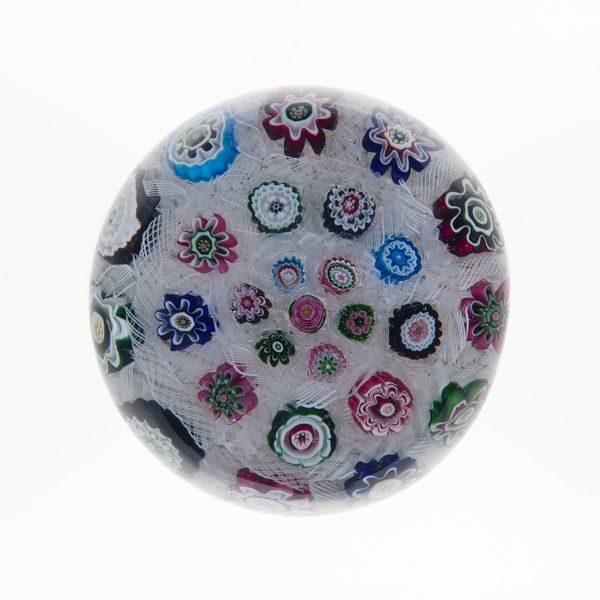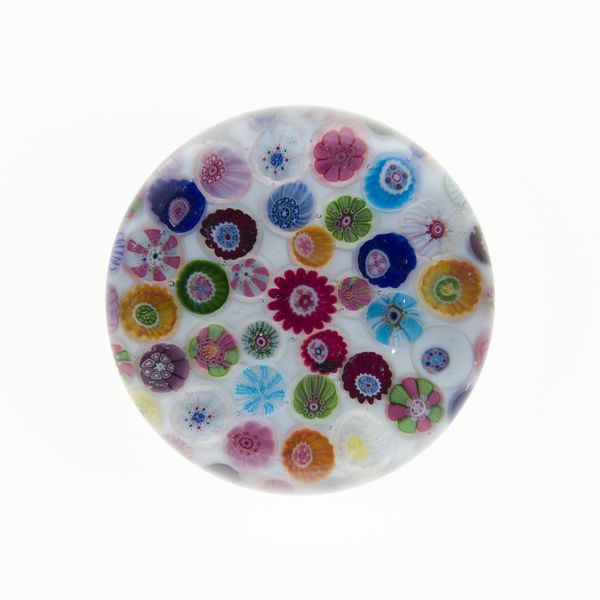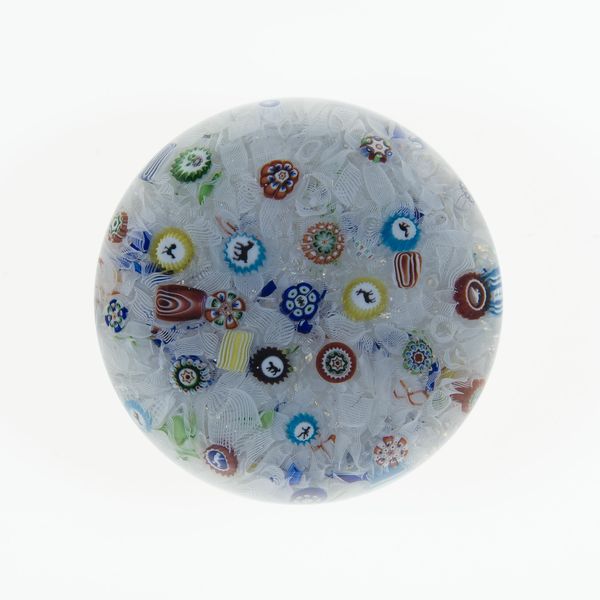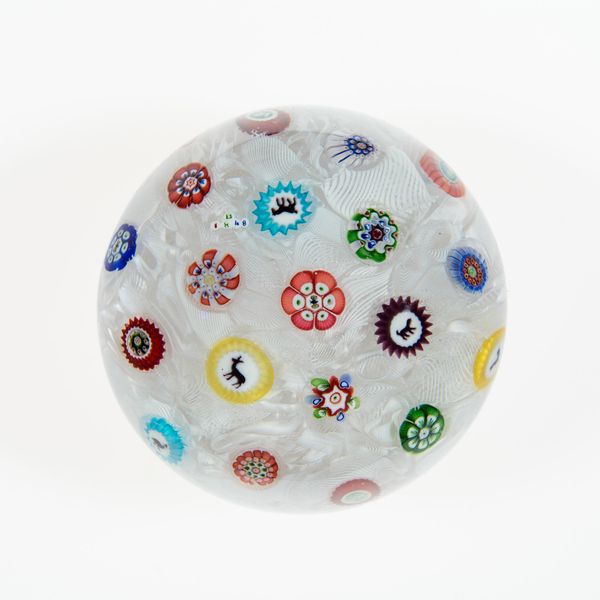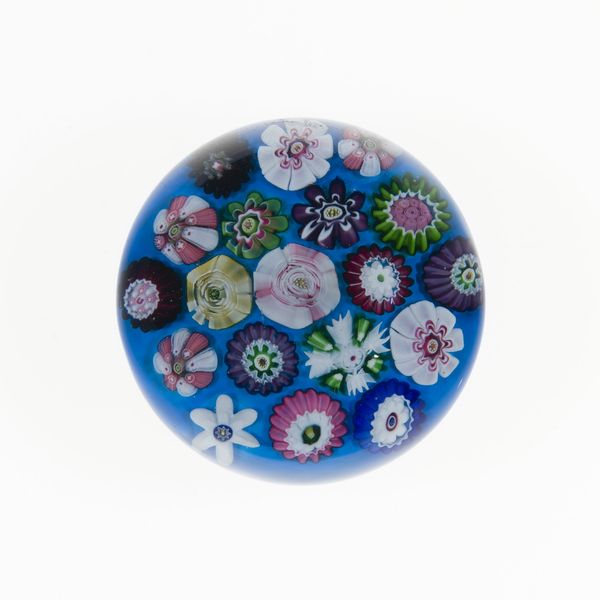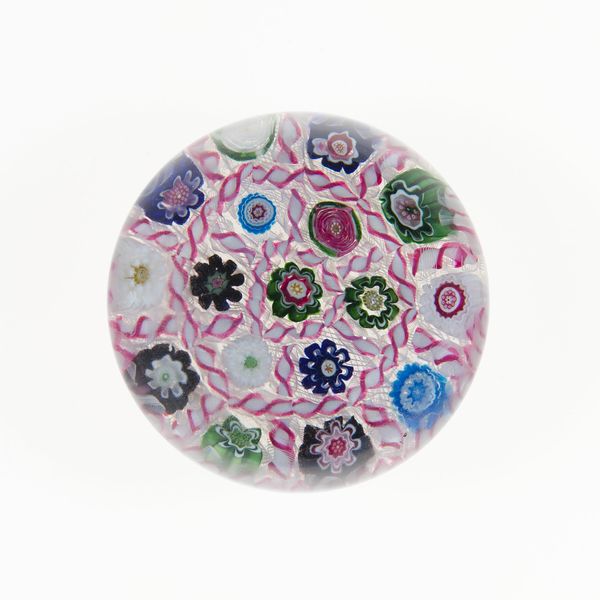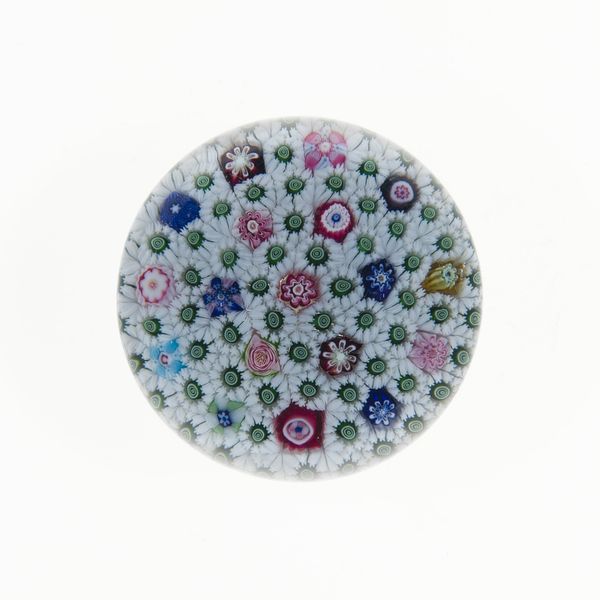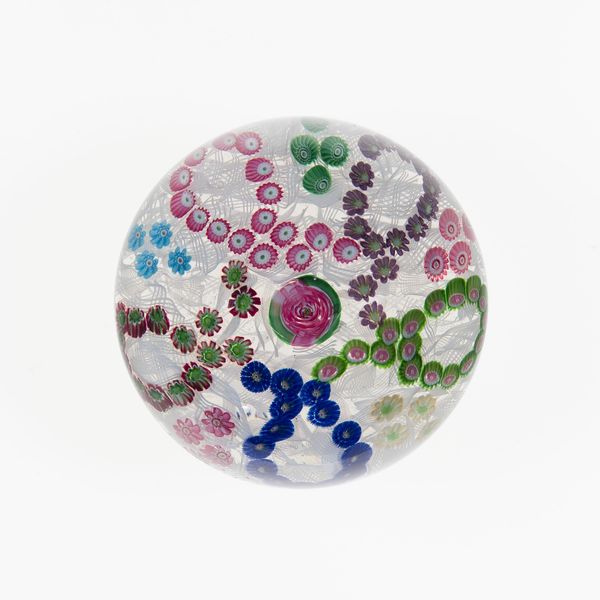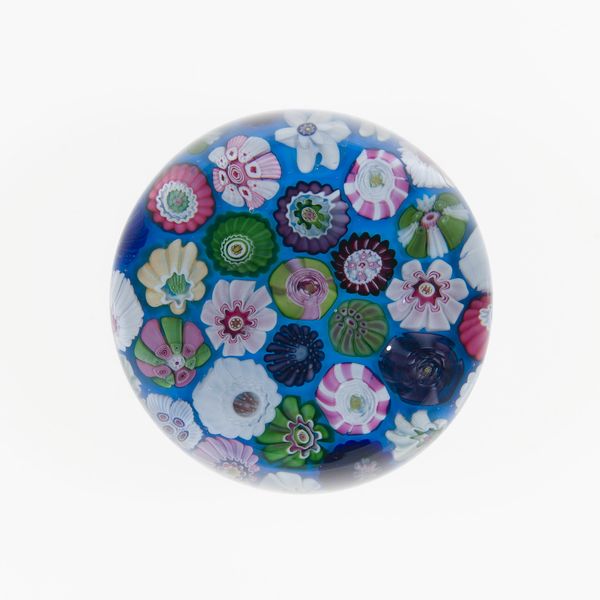
paper, glass
#
paper
#
glass
#
france
#
decorative-art
Dimensions: Diam. 9.7 cm (3 13/16 in.)
Copyright: Public Domain
Curator: Let's talk about this intriguing "Paperweight," made by Clichy Glasshouse sometime between 1845 and 1860. It resides here at the Art Institute of Chicago. Editor: My initial thought is that it looks surprisingly modern. The patterns inside the glass feel almost like pixels, creating a vibrant, self-contained universe. It also looks as though lace or some similarly delicate webbing holds those flowers. Curator: That 'lace' is, in fact, intricate filigree, a testament to the skill of the glassmakers. French paperweights like these were highly popular during that period, reflecting a burgeoning middle class and the rise of decorative arts. Editor: How interesting! It feels inherently domestic, a sort of quiet, feminine luxury. I'm thinking about the societal expectations placed on women then – objects of beauty confined within specific spaces. The paperweight, beautiful and contained, echoes that. Curator: Precisely. These objects offered a controlled view of the natural world, miniaturized and contained, aligning with Victorian ideals of order and control, which extended to gender roles. They also showcase the intersection of art, craft, and industry during this period. The Clichy Glasshouse was particularly known for the quality and intricacy of its millefiori designs. The motifs weren't simply pretty decorations; they also symbolized status. Owning a piece such as this demonstrated economic clout and fashionable taste. Editor: And the delicate nature of the material mirrors the fragility imposed upon those deemed delicate in the patriarchal structure of that era. A tiny beautiful glass universe, simultaneously pretty and potent in its confinement. Even its function of weighting papers hints to containing voices on paper and literally weighing them down to silence. What appears harmless carries an implicit directive on roles and values. Curator: Yes, it's remarkable how a seemingly simple object like a paperweight can reflect the complexities of the society that created it. Its cultural significance, however understated, provides insight into 19th-century decorative arts, manufacturing and gendered societal values. Editor: Absolutely, looking closely makes me realize that things made to bring happiness through beauty may not have had happiness and beauty for all involved. But even as things continue to evolve, glass remains as a material to capture what could not otherwise be grasped. Thank you for unpacking that a bit.
Comments
No comments
Be the first to comment and join the conversation on the ultimate creative platform.
